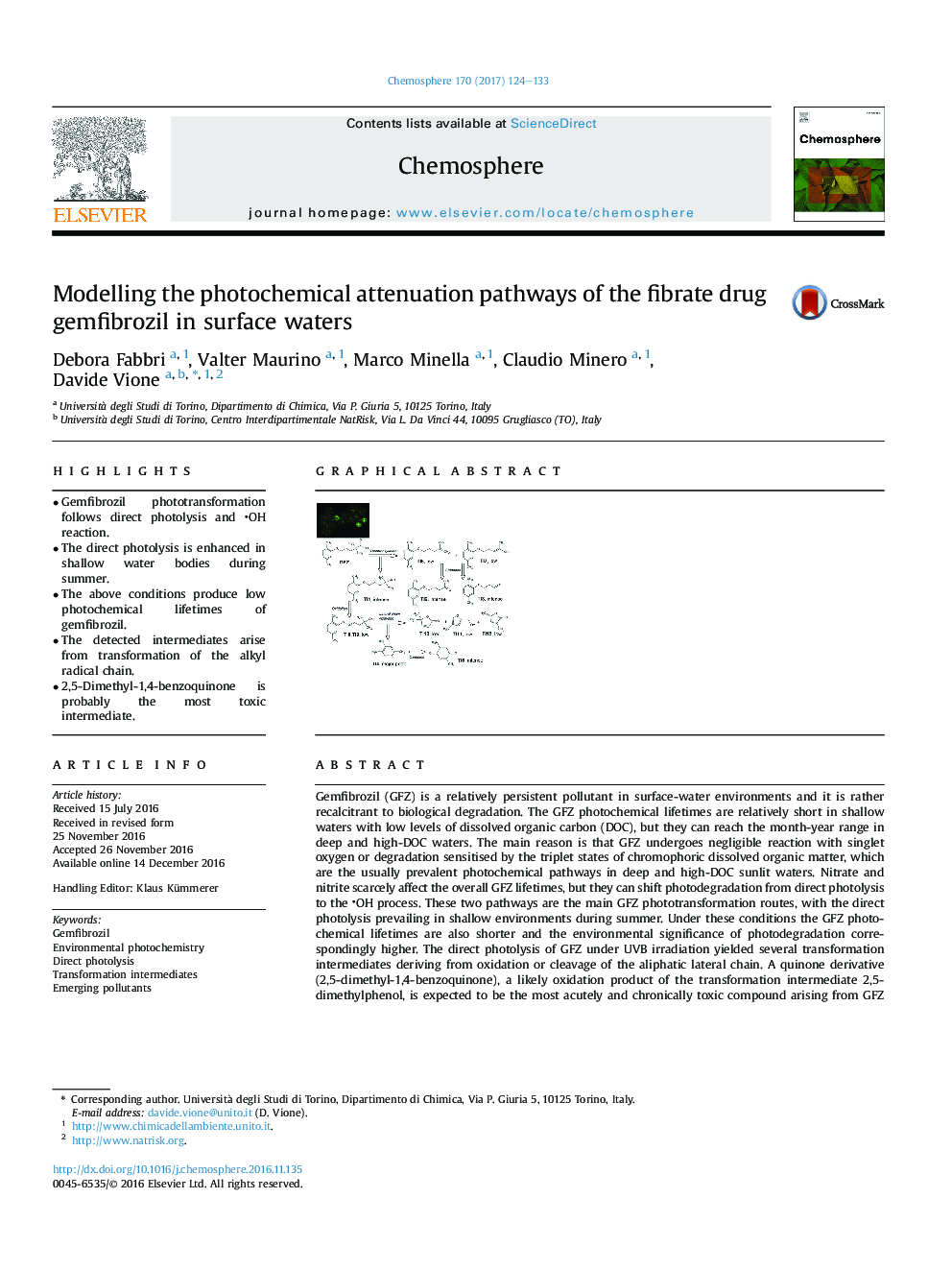| کد مقاله | کد نشریه | سال انتشار | مقاله انگلیسی | نسخه تمام متن |
|---|---|---|---|---|
| 5746793 | 1618801 | 2017 | 10 صفحه PDF | دانلود رایگان |

- Gemfibrozil phototransformation follows direct photolysis and OH reaction.
- The direct photolysis is enhanced in shallow water bodies during summer.
- The above conditions produce low photochemical lifetimes of gemfibrozil.
- The detected intermediates arise from transformation of the alkyl radical chain.
- 2,5-Dimethyl-1,4-benzoquinone is probably the most toxic intermediate.
Gemfibrozil (GFZ) is a relatively persistent pollutant in surface-water environments and it is rather recalcitrant to biological degradation. The GFZ photochemical lifetimes are relatively short in shallow waters with low levels of dissolved organic carbon (DOC), but they can reach the month-year range in deep and high-DOC waters. The main reason is that GFZ undergoes negligible reaction with singlet oxygen or degradation sensitised by the triplet states of chromophoric dissolved organic matter, which are the usually prevalent photochemical pathways in deep and high-DOC sunlit waters. Nitrate and nitrite scarcely affect the overall GFZ lifetimes, but they can shift photodegradation from direct photolysis to the OH process. These two pathways are the main GFZ phototransformation routes, with the direct photolysis prevailing in shallow environments during summer. Under these conditions the GFZ photochemical lifetimes are also shorter and the environmental significance of photodegradation correspondingly higher. The direct photolysis of GFZ under UVB irradiation yielded several transformation intermediates deriving from oxidation or cleavage of the aliphatic lateral chain. A quinone derivative (2,5-dimethyl-1,4-benzoquinone), a likely oxidation product of the transformation intermediate 2,5-dimethylphenol, is expected to be the most acutely and chronically toxic compound arising from GFZ direct photolysis. Interestingly, literature evidence suggests that the same toxic intermediate would be formed upon OH reaction.
177
Journal: Chemosphere - Volume 170, March 2017, Pages 124-133